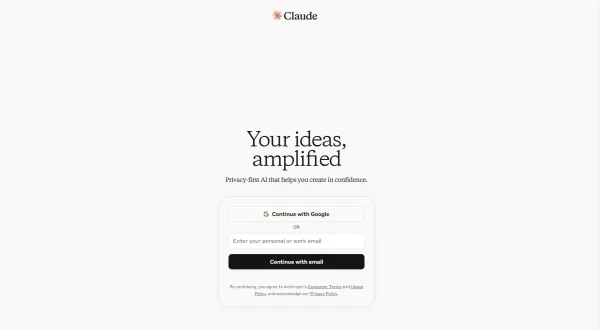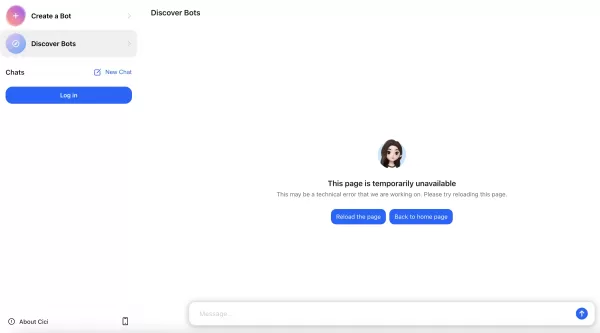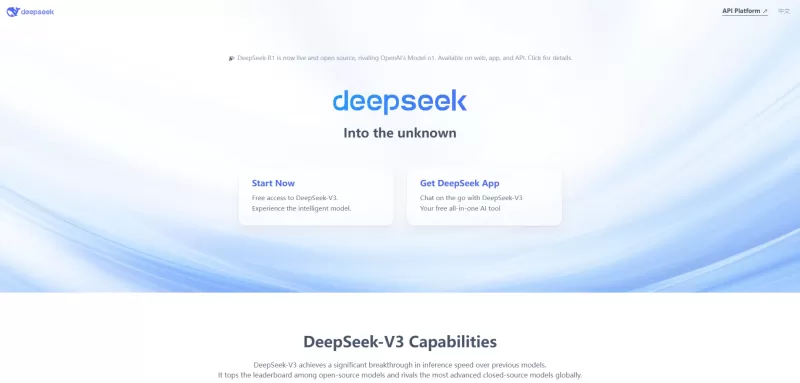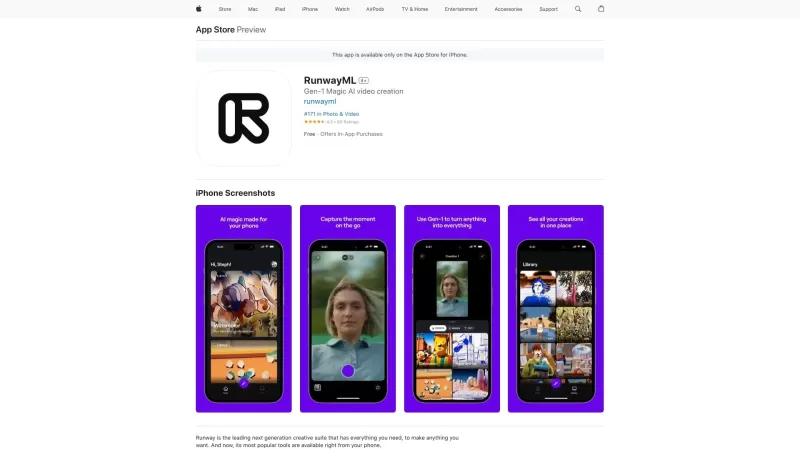AI vs. Human Designers: Charting the Future of Design Careers
The rise of artificial intelligence has set the design world abuzz with both excitement and apprehension. Junior designers, eager to carve out their niche, often find themselves pondering: will AI snatch my job? Am I destined for redundancy? Should I pivot to a new career? This article delves into the intricate dance between AI and human designers, examining AI's capabilities and shortcomings, and providing a roadmap for designers navigating this dynamic terrain.
Key Points
- AI shines in specific design tasks, such as generating variations and automating mundane processes.
- Human designers offer irreplaceable skills like empathy, strategic thinking, and tackling complex problems, which AI currently cannot match.
- AI is a tool that, when mastered, can significantly enhance a designer's toolkit.
- The design industry is in flux, demanding that designers adapt and acquire new skills to stay ahead.
- Focus on honing skills that set you apart from AI, such as creativity, communication, and teamwork.
The AI Design Landscape: Strengths and Limitations
AI in Design: What Can It Do?
AI has revolutionized the design field, showcasing its prowess in executing various tasks with remarkable speed and efficiency. One of its standout abilities is generating countless design variations in a matter of seconds. Imagine you're in need of multiple logo options or website layouts; AI can whip up a diverse array of choices based on your initial input, dramatically cutting down on the time spent brainstorming and developing initial concepts.

AI also excels at automating repetitive design tasks. Whether it's resizing images, creating banners in various formats, or generating social media posts, AI can handle these chores, freeing up designers to focus on the more strategic and creative facets of their work.
Moreover, AI algorithms can sift through vast amounts of data to pinpoint design trends and user preferences. This data-driven insight can be invaluable in crafting designs that resonate more deeply with target audiences and achieve desired outcomes. For instance, heatmap analysis can reveal which parts of a landing page draw the most attention, helping designers fine-tune layouts for better conversions.
Some AI design tools currently at our disposal include:
- Remix: Great for quickly generating design variations.
- Galileo AI: An AI design tool that accelerates the creation of landing pages.
- Uizard: A UI design tool that leverages AI to streamline certain UI design elements.
Capability Description Benefits Design Variation Generation Creates numerous design options based on initial parameters, including color schemes, layouts, and font choices. Saves time on brainstorming, offers diverse design directions, and allows for rapid prototyping. Automated Task Completion Completes repetitive tasks automatically, such as image resizing, batch editing, and generating design assets for different platforms. Frees up designers for more creative work, reduces manual errors, and ensures consistency across platforms. Data-Driven Insights Analyzes large datasets to identify design trends, user preferences, and optimize design elements based on performance metrics. Enhances design effectiveness, improves user engagement, and supports informed decision-making. Content Generation Can generate copy, including marketing slogans, product descriptions, and blog content, based on user inputs and style preferences. Reduces the time needed to create content, supports consistent messaging, and enhances overall brand communication.
Where AI Falls Short: The Human Touch
While AI boasts impressive capabilities, it's essential to recognize its limitations. Design isn't just a technical exercise; it's deeply rooted in human understanding, empathy, and strategic thinking—areas where AI currently falls short. A prime example is AI's inability to truly grasp human emotions and motivations. AI algorithms can analyze data patterns but lack the nuanced understanding of human context that informs effective design. A human designer can pick up on subtle cues in a client's briefing, infer unspoken needs, and translate these into designs that resonate with the target audience.
Additionally, AI struggles with complex problem-solving. Design challenges often demand creative solutions that transcend mere pattern recognition and data analysis. Designers need to think critically, challenge assumptions, and explore unconventional approaches—skills that AI currently can't replicate. Ethical considerations are also crucial in design. Designers must weigh the social impact of their work, ensure accessibility for all users, and avoid perpetuating harmful stereotypes. However, AI algorithms might inadvertently perpetuate biases present in their training data, leading to unethical design outcomes. AI can also be used to generate misleading content, like deepfakes.
AI's limitations include:
- Empathy: AI cannot truly understand human emotions and needs.
- Complex Problem-Solving: AI struggles with challenges requiring creative thinking and unconventional approaches.
- Ethical Considerations: AI may perpetuate biases and lack an understanding of social impact.
In essence, AI is a tool that complements human creativity and strategic thinking but cannot fully replace it.
Navigating the AI Revolution: Thriving as a Designer
Embrace AI as a Design Partner
The best way forward is to embrace AI as a partner rather than a competitor. Focus on developing skills that distinguish you from AI, such as creativity, communication, and strategic thinking. Learn to leverage AI tools to enhance your workflow and free up time for more strategic and creative tasks. For example, use AI to generate initial design concepts, then refine and personalize them based on your expertise and understanding of the client's needs. Instead of fearing automation, embrace it and learn to use it to your advantage. This might mean mastering new software or rethinking your workflow.
Ways to embrace AI as a design partner include:
- Creativity: Develop unique artistic visions that AI cannot replicate.
- Communication: Enhance your ability to communicate effectively with clients and understand their needs.
- Strategic Thinking: Think critically and develop creative solutions to complex design challenges.
Designers who can effectively collaborate with AI will be highly sought after in the future.

The key is to focus on developing your unique human skills while leveraging AI tools to boost your productivity and creativity. Continuous learning and adaptation are vital in this ever-changing landscape. Stay current with the latest AI technologies and design trends, and be willing to experiment with new tools and techniques. The design industry is constantly evolving, and designers who embrace lifelong learning will be best positioned for success.
Building a Future-Proof Design Career
The design industry is undergoing a profound transformation, driven by the rapid advancements in artificial intelligence. To thrive in this evolving landscape, designers need to adapt their skill sets and embrace new approaches to their work. Developing a strong portfolio that showcases your unique design skills and experiences is crucial. Highlight projects that demonstrate your creativity, problem-solving abilities, and understanding of user needs. Networking with other designers and industry professionals can provide valuable insights and opportunities. Attend conferences, workshops, and online events to connect with peers and learn about the latest trends. Consider specializing in a niche area of design, such as UX design, branding, or motion graphics. This can make you more valuable to employers and clients. UX design, in particular, focuses on user experience, which requires empathy and understanding—key areas where AI currently falls short.
Develop skills in areas like design thinking, a human-centered approach to problem-solving that involves understanding user needs, generating ideas, prototyping solutions, and testing them with users. Master the art of storytelling. Effective communication is essential for conveying design concepts, persuading stakeholders, and building relationships with clients. Data-driven design is the future. Learning to interpret and apply data analytics to design decisions can significantly enhance your impact. In conclusion, the rise of AI presents both challenges and opportunities for designers. By focusing on their unique human skills, embracing AI as a partner, and continuously learning and adapting, designers can thrive in the age of artificial intelligence and build fulfilling and successful careers.
How to Use AI Design Tools Effectively
Mastering AI Design Tools: A Step-by-Step Guide
To effectively integrate AI into your design workflow, start by selecting the right tools. Several AI-powered design platforms exist, each with unique capabilities. Experiment with different options to find the ones that best suit your needs. Begin with clear and specific prompts. The quality of AI-generated designs depends heavily on the input you provide. Use precise language and detailed descriptions to guide the AI algorithm. Refine and personalize AI-generated designs. Use AI as a starting point, and then add your creative touch to create unique and compelling designs. Experiment with different styles and techniques. AI can help you explore new design directions and push the boundaries of your creativity. Continuously evaluate the results and refine your approach. The more you experiment with AI design tools, the better you'll become at using them effectively. Remember, AI is a tool that complements your design skills, not replaces them.
Pros and Cons of Using AI in Graphic Design
Pros
- Increased efficiency and speed in design processes.
- Ability to generate multiple design options quickly.
- Data-driven insights to inform design decisions.
- Automation of repetitive tasks, freeing up designer time.
- Potential for personalized and dynamic designs.
Cons
- Lack of creativity and originality.
- Inability to understand human emotions and motivations.
- Potential for biased or unethical design outcomes.
- Dependence on data and algorithms.
- Risk of homogenization and loss of design diversity.
Frequently Asked Questions
Will AI completely replace human designers?
It's unlikely that AI will completely replace human designers. AI excels at specific tasks, such as generating variations and automating repetitive processes, but lacks the creativity, empathy, and strategic thinking that human designers bring to the table. The future of design is likely to involve a collaboration between AI and human designers.
What skills should designers focus on to stay relevant in the age of AI?
Designers should focus on developing skills that differentiate them from AI, such as creativity, communication, strategic thinking, and problem-solving. Learning how to leverage AI tools effectively is also crucial.
Are there any ethical considerations when using AI in design?
Yes, there are several ethical considerations, including the potential for AI to perpetuate biases present in the data it is trained on, and the need to ensure accessibility and inclusivity in design outcomes. Designers should be mindful of these ethical implications and strive to use AI responsibly.
Related Questions
How is AI currently used in web design?
AI is being integrated into web design in several ways to enhance both the design process and the user experience. AI-powered tools can generate website layouts based on user preferences, analyze user behavior to optimize website performance, and even create personalized content for individual visitors. AI also contributes to improving accessibility by automatically identifying and fixing potential usability issues, making websites more inclusive and user-friendly. Further advancements in AI have led to the development of chatbots for customer support, enhancing user engagement and providing instant assistance. In e-commerce, AI is employed to personalize product recommendations, improving the customer shopping experience and driving sales. These applications reflect the evolving role of AI in web design, making websites more efficient, user-centric, and accessible.
AI's impact on web design is summarized below:
- Layout Generation: AI algorithms analyze design principles and user preferences to create automated website layouts, reducing the time designers spend on initial setup.
- User Behavior Analysis: AI tools track how users interact with a website to identify areas for improvement and optimize the site's functionality and content presentation.
- Personalized Content: AI personalizes website content based on user demographics, interests, and past interactions, enhancing the user experience and engagement.
- Accessibility Enhancement: AI tools scan websites for accessibility issues and provide recommendations to ensure that all users can access and use the site effectively.
- Chatbots for Customer Support: AI-powered chatbots provide instant assistance to website visitors, addressing their queries and improving customer satisfaction.
- E-commerce Product Recommendations: AI algorithms analyze user shopping behavior to suggest relevant products, boosting sales and enhancing the online shopping experience.
This integration reflects the increasing significance of AI in web design, optimizing websites for improved performance, user-centricity, and accessibility.
Related article
 Master Emerald Kaizo Nuzlocke: Ultimate Survival & Strategy Guide
Emerald Kaizo stands as one of the most formidable Pokémon ROM hacks ever conceived. While attempting a Nuzlocke run exponentially increases the challenge, victory remains achievable through meticulous planning and strategic execution. This definitiv
Master Emerald Kaizo Nuzlocke: Ultimate Survival & Strategy Guide
Emerald Kaizo stands as one of the most formidable Pokémon ROM hacks ever conceived. While attempting a Nuzlocke run exponentially increases the challenge, victory remains achievable through meticulous planning and strategic execution. This definitiv
 AI-Powered Cover Letters: Expert Guide for Journal Submissions
In today's competitive academic publishing environment, crafting an effective cover letter can make the crucial difference in your manuscript's acceptance. Discover how AI-powered tools like ChatGPT can streamline this essential task, helping you cre
AI-Powered Cover Letters: Expert Guide for Journal Submissions
In today's competitive academic publishing environment, crafting an effective cover letter can make the crucial difference in your manuscript's acceptance. Discover how AI-powered tools like ChatGPT can streamline this essential task, helping you cre
 US to Sanction Foreign Officials Over Social Media Regulations
US Takes Stand Against Global Digital Content Regulations
The State Department issued a sharp diplomatic rebuke this week targeting European digital governance policies, signaling escalating tensions over control of online platforms. Secretary Marco
Comments (12)
0/200
US to Sanction Foreign Officials Over Social Media Regulations
US Takes Stand Against Global Digital Content Regulations
The State Department issued a sharp diplomatic rebuke this week targeting European digital governance policies, signaling escalating tensions over control of online platforms. Secretary Marco
Comments (12)
0/200
![EricPerez]() EricPerez
EricPerez
 August 24, 2025 at 10:39:46 PM EDT
August 24, 2025 at 10:39:46 PM EDT
AI taking over design? Kinda scary but also exciting! I wonder if it’ll push designers to get super creative or just make us obsolete. 🤔


 0
0
![DanielAllen]() DanielAllen
DanielAllen
 August 23, 2025 at 11:01:17 PM EDT
August 23, 2025 at 11:01:17 PM EDT
AI designers are shaking things up! It's wild how fast they're learning, but I still think human creativity has that unique spark machines can't replicate. Exciting times, though! 😎


 0
0
![AnthonyRoberts]() AnthonyRoberts
AnthonyRoberts
 April 26, 2025 at 5:58:11 PM EDT
April 26, 2025 at 5:58:11 PM EDT
As a junior designer, this article really hit home. It's scary to think AI might take over, but it also pushes me to up my game. The insights on how to adapt and thrive alongside AI were super helpful. Definitely worth a read if you're in design! 👍


 0
0
![GaryWalker]() GaryWalker
GaryWalker
 April 26, 2025 at 12:32:54 PM EDT
April 26, 2025 at 12:32:54 PM EDT
この記事はデザインの未来について目を開かせてくれました。AIが仕事を奪うかもしれないと思うと怖いですが、それが私をさらに学ばせ、先を行くように推進します。AIは私たちを置き換えるのではなく、より良くするツールになるかもしれません。熱いデザインの皆さんに読む価値あり!🔥


 0
0
![KennethJones]() KennethJones
KennethJones
 April 26, 2025 at 9:01:37 AM EDT
April 26, 2025 at 9:01:37 AM EDT
This article really opened my eyes to the future of design! It's scary to think AI might take over, but it also pushes me to learn more and stay ahead. Maybe AI will just be a tool to make us better, not replace us. Worth a read for any designer feeling the heat! 🔥


 0
0
![CharlesRoberts]() CharlesRoberts
CharlesRoberts
 April 26, 2025 at 5:01:25 AM EDT
April 26, 2025 at 5:01:25 AM EDT
Como designer júnior, este artigo realmente me tocou. É assustador pensar que a IA pode tomar conta, mas também me motiva a melhorar meu jogo. As percepções sobre como se adaptar e prosperar ao lado da IA foram super úteis. Vale a pena ler se você está no design! 👍


 0
0
The rise of artificial intelligence has set the design world abuzz with both excitement and apprehension. Junior designers, eager to carve out their niche, often find themselves pondering: will AI snatch my job? Am I destined for redundancy? Should I pivot to a new career? This article delves into the intricate dance between AI and human designers, examining AI's capabilities and shortcomings, and providing a roadmap for designers navigating this dynamic terrain.
Key Points
- AI shines in specific design tasks, such as generating variations and automating mundane processes.
- Human designers offer irreplaceable skills like empathy, strategic thinking, and tackling complex problems, which AI currently cannot match.
- AI is a tool that, when mastered, can significantly enhance a designer's toolkit.
- The design industry is in flux, demanding that designers adapt and acquire new skills to stay ahead.
- Focus on honing skills that set you apart from AI, such as creativity, communication, and teamwork.
The AI Design Landscape: Strengths and Limitations
AI in Design: What Can It Do?
AI has revolutionized the design field, showcasing its prowess in executing various tasks with remarkable speed and efficiency. One of its standout abilities is generating countless design variations in a matter of seconds. Imagine you're in need of multiple logo options or website layouts; AI can whip up a diverse array of choices based on your initial input, dramatically cutting down on the time spent brainstorming and developing initial concepts.

AI also excels at automating repetitive design tasks. Whether it's resizing images, creating banners in various formats, or generating social media posts, AI can handle these chores, freeing up designers to focus on the more strategic and creative facets of their work.
Moreover, AI algorithms can sift through vast amounts of data to pinpoint design trends and user preferences. This data-driven insight can be invaluable in crafting designs that resonate more deeply with target audiences and achieve desired outcomes. For instance, heatmap analysis can reveal which parts of a landing page draw the most attention, helping designers fine-tune layouts for better conversions.
Some AI design tools currently at our disposal include:
- Remix: Great for quickly generating design variations.
- Galileo AI: An AI design tool that accelerates the creation of landing pages.
- Uizard: A UI design tool that leverages AI to streamline certain UI design elements.
| Capability | Description | Benefits |
|---|---|---|
| Design Variation Generation | Creates numerous design options based on initial parameters, including color schemes, layouts, and font choices. | Saves time on brainstorming, offers diverse design directions, and allows for rapid prototyping. |
| Automated Task Completion | Completes repetitive tasks automatically, such as image resizing, batch editing, and generating design assets for different platforms. | Frees up designers for more creative work, reduces manual errors, and ensures consistency across platforms. |
| Data-Driven Insights | Analyzes large datasets to identify design trends, user preferences, and optimize design elements based on performance metrics. | Enhances design effectiveness, improves user engagement, and supports informed decision-making. |
| Content Generation | Can generate copy, including marketing slogans, product descriptions, and blog content, based on user inputs and style preferences. | Reduces the time needed to create content, supports consistent messaging, and enhances overall brand communication. |
Where AI Falls Short: The Human Touch
While AI boasts impressive capabilities, it's essential to recognize its limitations. Design isn't just a technical exercise; it's deeply rooted in human understanding, empathy, and strategic thinking—areas where AI currently falls short. A prime example is AI's inability to truly grasp human emotions and motivations. AI algorithms can analyze data patterns but lack the nuanced understanding of human context that informs effective design. A human designer can pick up on subtle cues in a client's briefing, infer unspoken needs, and translate these into designs that resonate with the target audience.
Additionally, AI struggles with complex problem-solving. Design challenges often demand creative solutions that transcend mere pattern recognition and data analysis. Designers need to think critically, challenge assumptions, and explore unconventional approaches—skills that AI currently can't replicate. Ethical considerations are also crucial in design. Designers must weigh the social impact of their work, ensure accessibility for all users, and avoid perpetuating harmful stereotypes. However, AI algorithms might inadvertently perpetuate biases present in their training data, leading to unethical design outcomes. AI can also be used to generate misleading content, like deepfakes.
AI's limitations include:
- Empathy: AI cannot truly understand human emotions and needs.
- Complex Problem-Solving: AI struggles with challenges requiring creative thinking and unconventional approaches.
- Ethical Considerations: AI may perpetuate biases and lack an understanding of social impact.
In essence, AI is a tool that complements human creativity and strategic thinking but cannot fully replace it.
Navigating the AI Revolution: Thriving as a Designer
Embrace AI as a Design Partner
The best way forward is to embrace AI as a partner rather than a competitor. Focus on developing skills that distinguish you from AI, such as creativity, communication, and strategic thinking. Learn to leverage AI tools to enhance your workflow and free up time for more strategic and creative tasks. For example, use AI to generate initial design concepts, then refine and personalize them based on your expertise and understanding of the client's needs. Instead of fearing automation, embrace it and learn to use it to your advantage. This might mean mastering new software or rethinking your workflow.
Ways to embrace AI as a design partner include:
- Creativity: Develop unique artistic visions that AI cannot replicate.
- Communication: Enhance your ability to communicate effectively with clients and understand their needs.
- Strategic Thinking: Think critically and develop creative solutions to complex design challenges.
Designers who can effectively collaborate with AI will be highly sought after in the future.

The key is to focus on developing your unique human skills while leveraging AI tools to boost your productivity and creativity. Continuous learning and adaptation are vital in this ever-changing landscape. Stay current with the latest AI technologies and design trends, and be willing to experiment with new tools and techniques. The design industry is constantly evolving, and designers who embrace lifelong learning will be best positioned for success.
Building a Future-Proof Design Career
The design industry is undergoing a profound transformation, driven by the rapid advancements in artificial intelligence. To thrive in this evolving landscape, designers need to adapt their skill sets and embrace new approaches to their work. Developing a strong portfolio that showcases your unique design skills and experiences is crucial. Highlight projects that demonstrate your creativity, problem-solving abilities, and understanding of user needs. Networking with other designers and industry professionals can provide valuable insights and opportunities. Attend conferences, workshops, and online events to connect with peers and learn about the latest trends. Consider specializing in a niche area of design, such as UX design, branding, or motion graphics. This can make you more valuable to employers and clients. UX design, in particular, focuses on user experience, which requires empathy and understanding—key areas where AI currently falls short.
Develop skills in areas like design thinking, a human-centered approach to problem-solving that involves understanding user needs, generating ideas, prototyping solutions, and testing them with users. Master the art of storytelling. Effective communication is essential for conveying design concepts, persuading stakeholders, and building relationships with clients. Data-driven design is the future. Learning to interpret and apply data analytics to design decisions can significantly enhance your impact. In conclusion, the rise of AI presents both challenges and opportunities for designers. By focusing on their unique human skills, embracing AI as a partner, and continuously learning and adapting, designers can thrive in the age of artificial intelligence and build fulfilling and successful careers.
How to Use AI Design Tools Effectively
Mastering AI Design Tools: A Step-by-Step Guide
To effectively integrate AI into your design workflow, start by selecting the right tools. Several AI-powered design platforms exist, each with unique capabilities. Experiment with different options to find the ones that best suit your needs. Begin with clear and specific prompts. The quality of AI-generated designs depends heavily on the input you provide. Use precise language and detailed descriptions to guide the AI algorithm. Refine and personalize AI-generated designs. Use AI as a starting point, and then add your creative touch to create unique and compelling designs. Experiment with different styles and techniques. AI can help you explore new design directions and push the boundaries of your creativity. Continuously evaluate the results and refine your approach. The more you experiment with AI design tools, the better you'll become at using them effectively. Remember, AI is a tool that complements your design skills, not replaces them.
Pros and Cons of Using AI in Graphic Design
Pros
- Increased efficiency and speed in design processes.
- Ability to generate multiple design options quickly.
- Data-driven insights to inform design decisions.
- Automation of repetitive tasks, freeing up designer time.
- Potential for personalized and dynamic designs.
Cons
- Lack of creativity and originality.
- Inability to understand human emotions and motivations.
- Potential for biased or unethical design outcomes.
- Dependence on data and algorithms.
- Risk of homogenization and loss of design diversity.
Frequently Asked Questions
Will AI completely replace human designers?
It's unlikely that AI will completely replace human designers. AI excels at specific tasks, such as generating variations and automating repetitive processes, but lacks the creativity, empathy, and strategic thinking that human designers bring to the table. The future of design is likely to involve a collaboration between AI and human designers.
What skills should designers focus on to stay relevant in the age of AI?
Designers should focus on developing skills that differentiate them from AI, such as creativity, communication, strategic thinking, and problem-solving. Learning how to leverage AI tools effectively is also crucial.
Are there any ethical considerations when using AI in design?
Yes, there are several ethical considerations, including the potential for AI to perpetuate biases present in the data it is trained on, and the need to ensure accessibility and inclusivity in design outcomes. Designers should be mindful of these ethical implications and strive to use AI responsibly.
Related Questions
How is AI currently used in web design?
AI is being integrated into web design in several ways to enhance both the design process and the user experience. AI-powered tools can generate website layouts based on user preferences, analyze user behavior to optimize website performance, and even create personalized content for individual visitors. AI also contributes to improving accessibility by automatically identifying and fixing potential usability issues, making websites more inclusive and user-friendly. Further advancements in AI have led to the development of chatbots for customer support, enhancing user engagement and providing instant assistance. In e-commerce, AI is employed to personalize product recommendations, improving the customer shopping experience and driving sales. These applications reflect the evolving role of AI in web design, making websites more efficient, user-centric, and accessible.
AI's impact on web design is summarized below:
- Layout Generation: AI algorithms analyze design principles and user preferences to create automated website layouts, reducing the time designers spend on initial setup.
- User Behavior Analysis: AI tools track how users interact with a website to identify areas for improvement and optimize the site's functionality and content presentation.
- Personalized Content: AI personalizes website content based on user demographics, interests, and past interactions, enhancing the user experience and engagement.
- Accessibility Enhancement: AI tools scan websites for accessibility issues and provide recommendations to ensure that all users can access and use the site effectively.
- Chatbots for Customer Support: AI-powered chatbots provide instant assistance to website visitors, addressing their queries and improving customer satisfaction.
- E-commerce Product Recommendations: AI algorithms analyze user shopping behavior to suggest relevant products, boosting sales and enhancing the online shopping experience.
This integration reflects the increasing significance of AI in web design, optimizing websites for improved performance, user-centricity, and accessibility.
 Master Emerald Kaizo Nuzlocke: Ultimate Survival & Strategy Guide
Emerald Kaizo stands as one of the most formidable Pokémon ROM hacks ever conceived. While attempting a Nuzlocke run exponentially increases the challenge, victory remains achievable through meticulous planning and strategic execution. This definitiv
Master Emerald Kaizo Nuzlocke: Ultimate Survival & Strategy Guide
Emerald Kaizo stands as one of the most formidable Pokémon ROM hacks ever conceived. While attempting a Nuzlocke run exponentially increases the challenge, victory remains achievable through meticulous planning and strategic execution. This definitiv
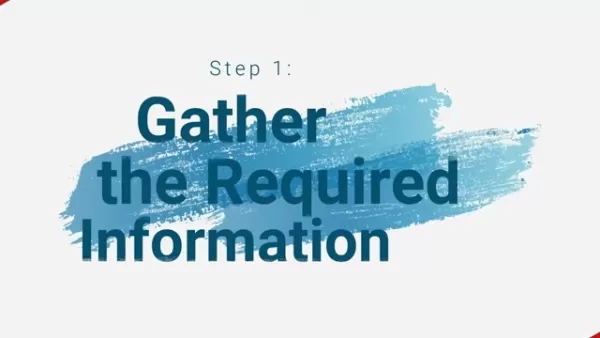 AI-Powered Cover Letters: Expert Guide for Journal Submissions
In today's competitive academic publishing environment, crafting an effective cover letter can make the crucial difference in your manuscript's acceptance. Discover how AI-powered tools like ChatGPT can streamline this essential task, helping you cre
AI-Powered Cover Letters: Expert Guide for Journal Submissions
In today's competitive academic publishing environment, crafting an effective cover letter can make the crucial difference in your manuscript's acceptance. Discover how AI-powered tools like ChatGPT can streamline this essential task, helping you cre
 US to Sanction Foreign Officials Over Social Media Regulations
US Takes Stand Against Global Digital Content Regulations
The State Department issued a sharp diplomatic rebuke this week targeting European digital governance policies, signaling escalating tensions over control of online platforms. Secretary Marco
US to Sanction Foreign Officials Over Social Media Regulations
US Takes Stand Against Global Digital Content Regulations
The State Department issued a sharp diplomatic rebuke this week targeting European digital governance policies, signaling escalating tensions over control of online platforms. Secretary Marco
 August 24, 2025 at 10:39:46 PM EDT
August 24, 2025 at 10:39:46 PM EDT
AI taking over design? Kinda scary but also exciting! I wonder if it’ll push designers to get super creative or just make us obsolete. 🤔


 0
0
 August 23, 2025 at 11:01:17 PM EDT
August 23, 2025 at 11:01:17 PM EDT
AI designers are shaking things up! It's wild how fast they're learning, but I still think human creativity has that unique spark machines can't replicate. Exciting times, though! 😎


 0
0
 April 26, 2025 at 5:58:11 PM EDT
April 26, 2025 at 5:58:11 PM EDT
As a junior designer, this article really hit home. It's scary to think AI might take over, but it also pushes me to up my game. The insights on how to adapt and thrive alongside AI were super helpful. Definitely worth a read if you're in design! 👍


 0
0
 April 26, 2025 at 12:32:54 PM EDT
April 26, 2025 at 12:32:54 PM EDT
この記事はデザインの未来について目を開かせてくれました。AIが仕事を奪うかもしれないと思うと怖いですが、それが私をさらに学ばせ、先を行くように推進します。AIは私たちを置き換えるのではなく、より良くするツールになるかもしれません。熱いデザインの皆さんに読む価値あり!🔥


 0
0
 April 26, 2025 at 9:01:37 AM EDT
April 26, 2025 at 9:01:37 AM EDT
This article really opened my eyes to the future of design! It's scary to think AI might take over, but it also pushes me to learn more and stay ahead. Maybe AI will just be a tool to make us better, not replace us. Worth a read for any designer feeling the heat! 🔥


 0
0
 April 26, 2025 at 5:01:25 AM EDT
April 26, 2025 at 5:01:25 AM EDT
Como designer júnior, este artigo realmente me tocou. É assustador pensar que a IA pode tomar conta, mas também me motiva a melhorar meu jogo. As percepções sobre como se adaptar e prosperar ao lado da IA foram super úteis. Vale a pena ler se você está no design! 👍


 0
0
